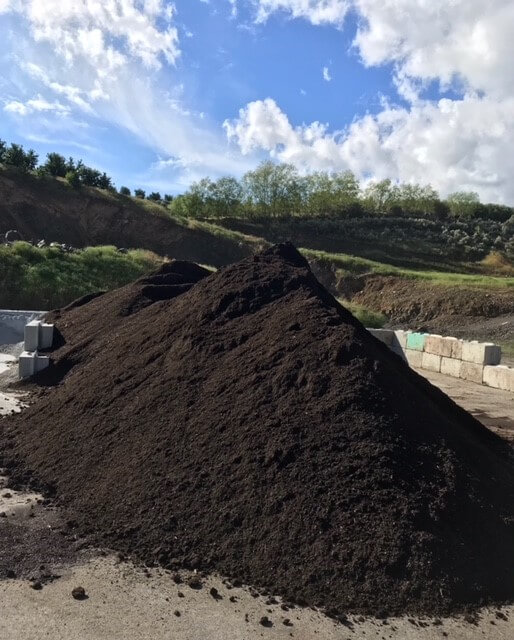Making World Famous Compost
|
My father, Kyle Mathison, likes to experiment, or as he often puts it, live his life on the edge. So, it came as no surprise to those of us in his family when he told us he was going to start a compost farm back in 2005. He is an avid reader and came upon an interesting article about how wine grape growers were using compost to make natural fertilizer for their vineyards. They found it was helping them grow wine grapes with deeper flavors. Always working to do the same, Kyle thought he could apply the same concept and use compost to grow apples, pears, and cherries that would “explode with flavor”. He set out on a composting mission, choosing a warm site on Stemilt Hill, not far from his orchards, to create what is now called the Stemilt World Famous Compost farm.

Kyle’s compost is a mix of many natural ingredients, which most would call garbage. But the garbage is green waste that can be regenerated! Kyle collects green waste from a variety of places, including Stemilt’s packing facilities. Instead of being taken to landfills, bins of leaves, rotten fruit, branches, and lime are transported to the compost farm. Other ingredients like horse manure and minerals are locally sourced and brought there too.
The community even gets to play a part in making World Famous Compost. Kyle opened the Stemilt Organic Recycling Center to provide homeowners and business owners a place to dispose of their green yard waste. Now, grass clippings stay out of the landfill and are regenerated at the compost farm to help make our World Famous Fruit.
Kyle selects green waste that will best meet the nutritional needs of his trees, and it’s a recipe that he’s dialed in over the years. Once at the compost farm, the waste is combined into long, neat rows. A giant rototiller towed by a tractor, mixes the rows daily to break down the waste. The watering and rotating process happens each day until the proper blend of feedstocks is acquired. At that point, the freshly mixed ‘windrow’ is placed onto a perforated pipe with a blower attached to one end. This pumps air through the pipe, and through the pile. It’s the key to ensuring oxygen is distributed efficiently to the microorganisms working hard at breaking waste down inside.
Water is sprayed on the piles so that each row is kept at the right moisture level. Water also maintains Kyle’s perfect ‘cooking’ temperature. He wants his compost to cook like a medium-rare steak and that “just right” temperature is between 142-145 degrees Fahrenheit. Temperature readings are taken often to make sure the compost piles stay in that range. If compost gets too warm, carbon levels are negatively impacted. If it gets too cold, it prevents microbes from flourishing. The entire process from start to finish takes around six weeks.
Kyle applies compost to his trees at different times of the year, including the spring, the busy summer growing season, and in the fall, just before trees settle down and rest for the winter.
Making compost once seemed like another crazy idea of Dad’s, but it’s become an important part of our recipe in growing apples, pears, and cherries. We work every day to grow fruit with World Famous flavors that will delight you. Compost helps us do just that, and with the best interests of the environment in mind.
